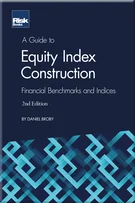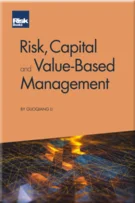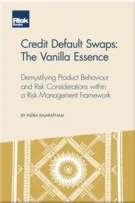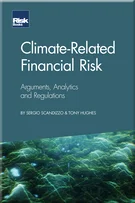The determinants of credit spread returns
Jouke Hottinga and Machiel Zwanenburg
Introduction
Credit derivatives: the past, the present and the future
The determinants of credit spread returns
What’s driving the default swap basis?
What is the value of modified restructuring?
The debt and equity linkage and the valuation of credit derivatives
Nth to default swaps and notes: all about default correlation
Portfolio credit risk models
Credit derivatives as an efficient way of transitioning to optimal portfolios
Overview of the CDO market
Synthetic securitisation and structured portfolio credit derivatives
Integrating credit derivatives and securitisation technology: the collateralised synthetic obligation
Considerations for dynamic and static, cash and synthetic collateralised debt obligations
CDOs of CDOs: art eating itself?
Valuation and risk analysis of synthetic collateralised debt obligations: a copula function approach
Extreme events and multi-name credit derivatives
Reduced-form models: curve construction and the pricing of credit swaps, options and hybrids
Dynamite dynamics
Modelling and hedging of default risk
ISDA’s role in the credit derivatives marketplace
Credit linked notes
Using guarantees and credit derivatives to reduce credit risk capital requirements under the New Basel Capital Accord
Jouke Hottinga is a risk manager at Aegon (NL). At the time of writing Machiel Zwanenburg was a quantitative researcher at Robeco Asset Management. He has been a risk manager at Robeco since July 2003.
In this chapter, we will consider the determinants of credit spread return, which is driven by both the level of and changes to the credit spread. This is important because if the credit spread of a bond increases, the yield of the bond will increase, resulting in a decrease in the bond’s market value. Information on the factors that drive the credit market can be used in different situations. Possible applications are the forecasting of the return on credit bonds, the measurement (and attribution) of the risk of credit portfolios and the attribution of portfolio returns in a performance measurement context. Although we restrict ourselves in this document to the determinants of credit spread returns on credit bonds, we briefly describe to what extent our results are applicable to credit derivatives.
Figure 1 depicts the development of credit spreads over the last 14 years. We notice that there is a high level of variation in the credit spread, particularly during the most recent
Copyright Infopro Digital Limited. All rights reserved.
As outlined in our terms and conditions, https://www.infopro-digital.com/terms-and-conditions/subscriptions/ (point 2.4), printing is limited to a single copy.
If you would like to purchase additional rights please email info@risk.net
Copyright Infopro Digital Limited. All rights reserved.
You may share this content using our article tools. As outlined in our terms and conditions, https://www.infopro-digital.com/terms-and-conditions/subscriptions/ (clause 2.4), an Authorised User may only make one copy of the materials for their own personal use. You must also comply with the restrictions in clause 2.5.
If you would like to purchase additional rights please email info@risk.net










